The weather’s changing here in Connecticut. Sweaters come out of storage, and sandals and sleeveless shirts are packed away. Light-colored duvets give way to warmer quilts and flannels. Pumpkins appear on porches and shelves, paving the way for twinkling lights in December.
What if we gave our art collections the same seasonal revisit?
The Japanese embrace this idea through a practice called kisetsukan, or “seasonal sense” — an aesthetic and cultural principle deeply rooted in their appreciation of nature and the home. This approach doesn’t just apply to art but extends to festivals, food, clothing, and everyday life. Kisetsukan reflects an awareness of the seasons and their emotional impact — something echoed in many cultures.
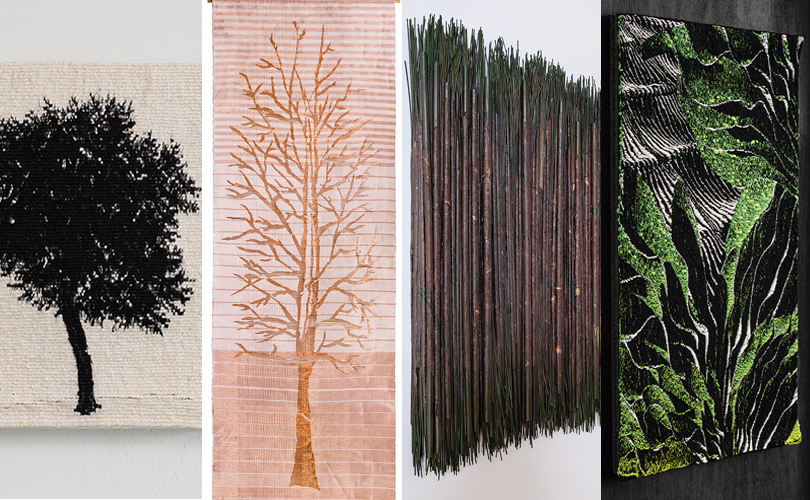
Substituting artwork throughout the year can shift one’s emotional response and renew our connection with both the art and the environment around us. A single piece viewed in spring might evoke freshness and renewal; that same piece in the depths of winter could feel nostalgic or even melancholy.
One beautiful example is Paul Furneaux’s City Trees II, City Lights II, a memory of a hidden park in Tokyo where luminous white and pale pink cherry blossoms contrasted against dark-barked pines and the brutalist concrete and glass of the surrounding buildings — a moment of heightened beauty and tension. Works like this could be rotated in and out as the days lengthen or shorten, responding to the mood of the season.
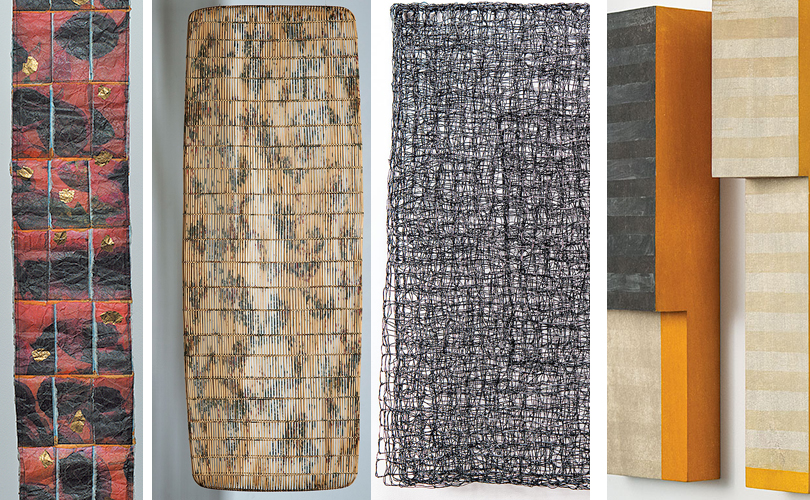
The Benefits of Seasonal Rotation
Rotating your artwork seasonally can:
- Deepen your connection to nature by aligning your interior space with what’s happening outside.
- Enhance appreciation for individual works by seeing them with fresh eyes each time they return.
- Spark reflection on the passage of time and the impermanence of beauty — what the Japanese call mono no aware, a bittersweet awareness of life’s fleeting nature.
- Expand your collection by giving you reason to collect more works and experiment with pairings, contrasts, and themes.
You don’t need to collect four new works for each season to begin. Start small. Instead of grouping similarly sized pieces, try alternating light and dark palettes, or switching black and white for bold color.
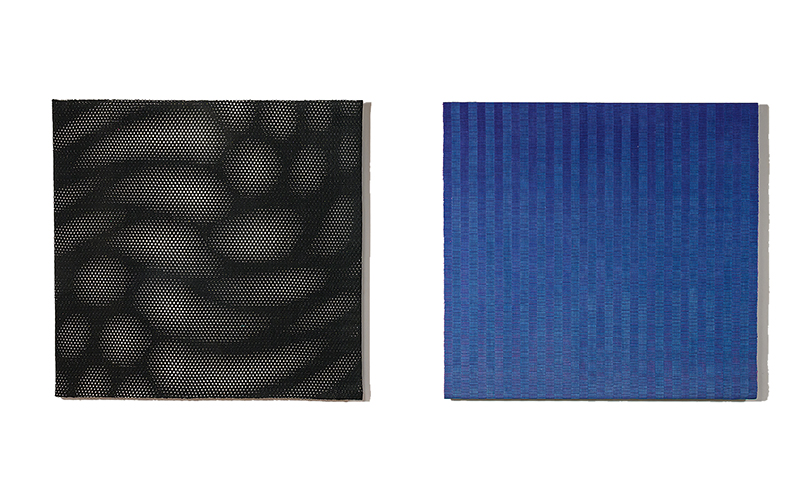
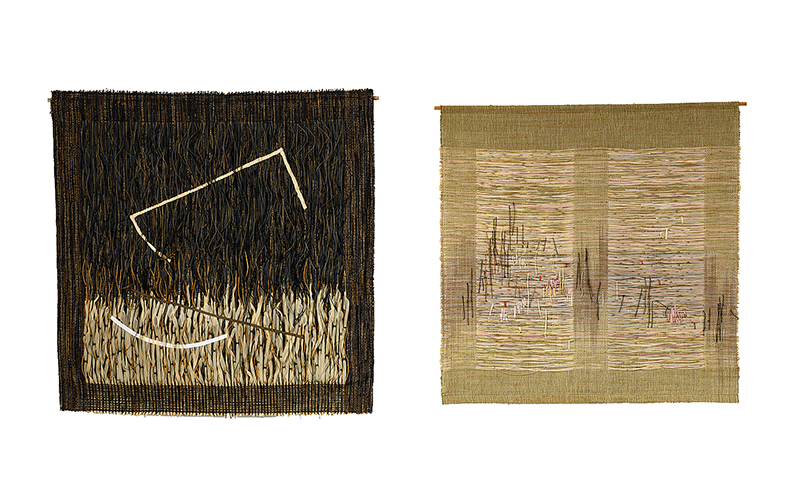
Some pieces even offer built-in versatility:
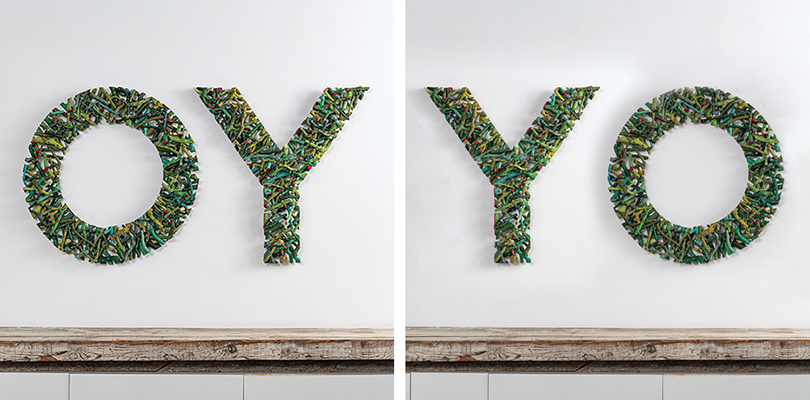
- Gyöngy Laky’s Deviation — OY can be displayed as “OY” for half the year and flipped to read “YO” for the other. Is it an existential “Oh, Why?” or a cheerful “Yo!” greeting? Let the season decide.
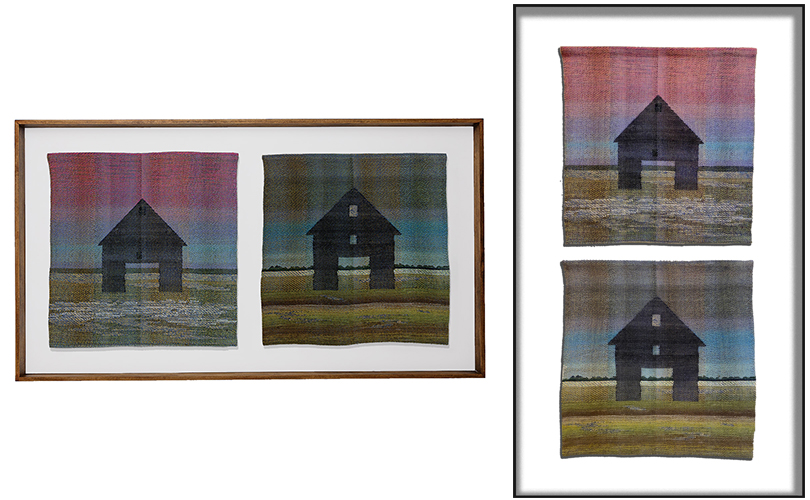
Laura Foster Nicholson’s work Shed can be hung vertically or horizontally, allowing a shift in visual weight and direction.
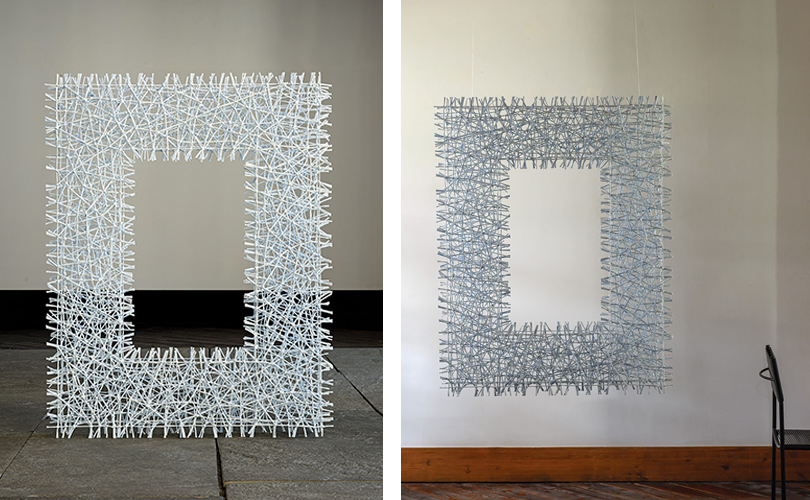
Sung Rim Park’s Beyond series can be installed on or off the wall, offering new perspectives and levels of engagement.
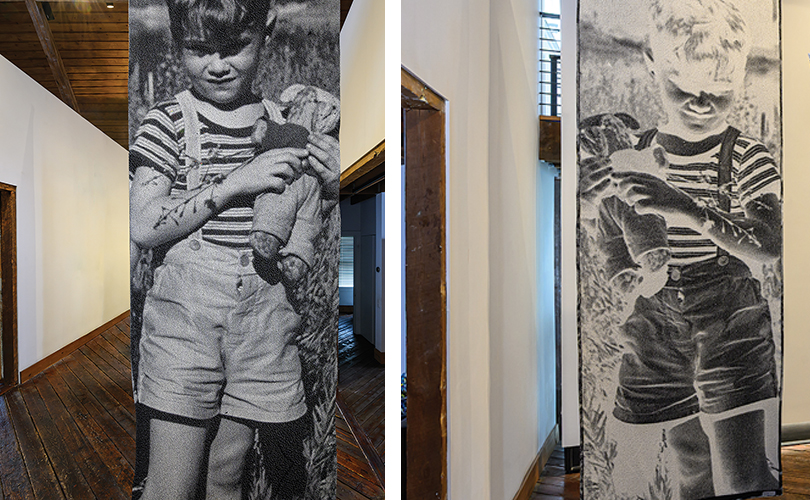
Lia Cook’s banners, like Big Richard, are impactful whether viewed from the front or reversed — another way to surprise the eye.
The more flexible the installation options, the more enjoyment you may find in your collection. Changing your art throughout the year brings new energy into a space, reawakens your senses, and reminds you of the beauty in change itself.
- Join us at Beauty is Resistance: art as antidote in Wilton, Connecticut through October 19, 2025 to see work by many of these artists. Or at our online walkthrough, Art on the Rocks: an art talkthrough with a twist on November 11 at 7 pm EST (or later on our YouTube channel).

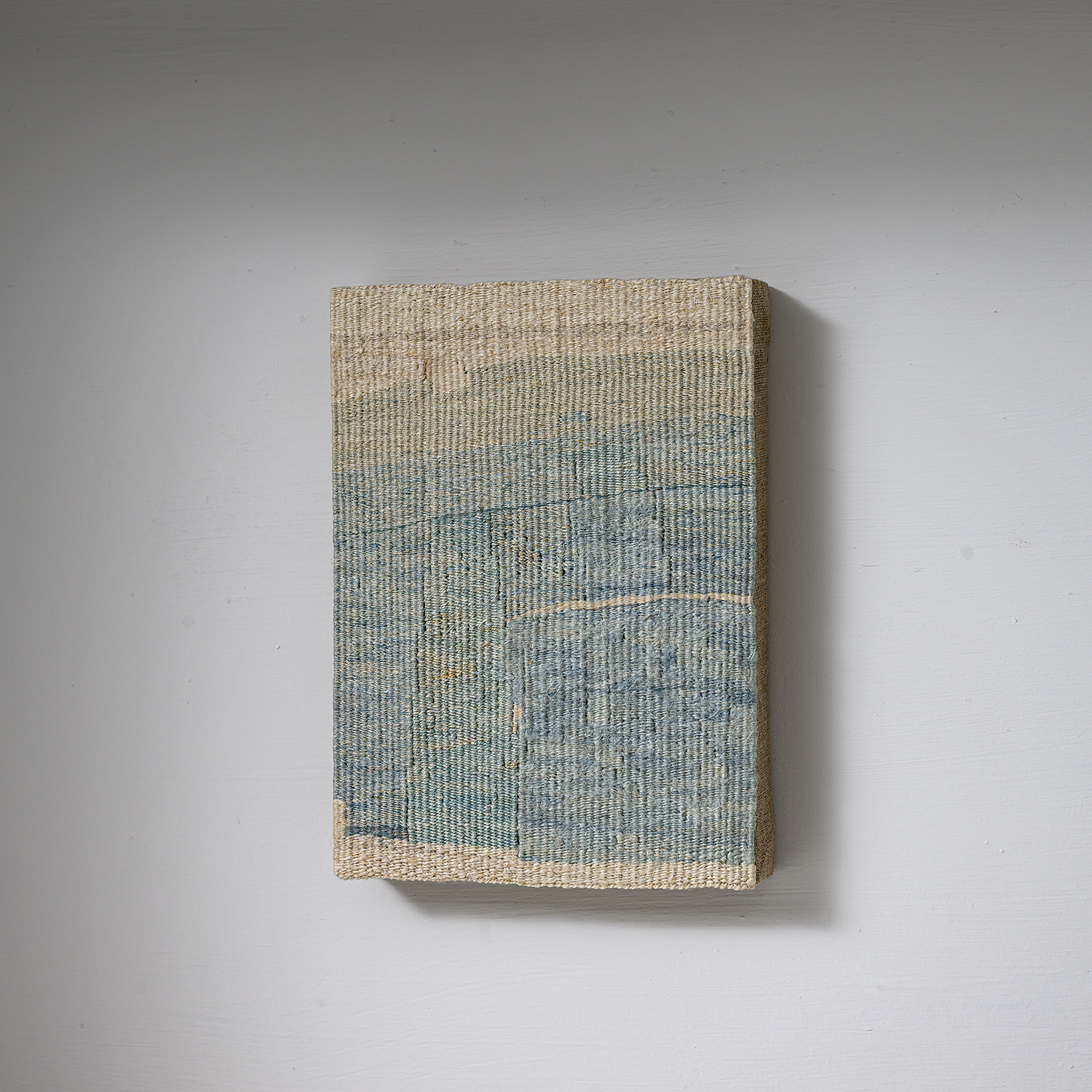
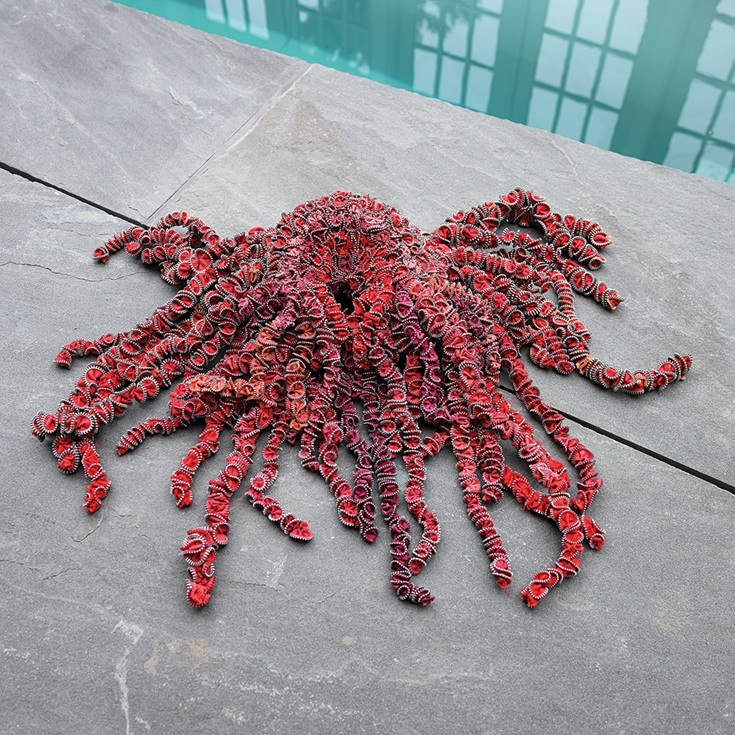
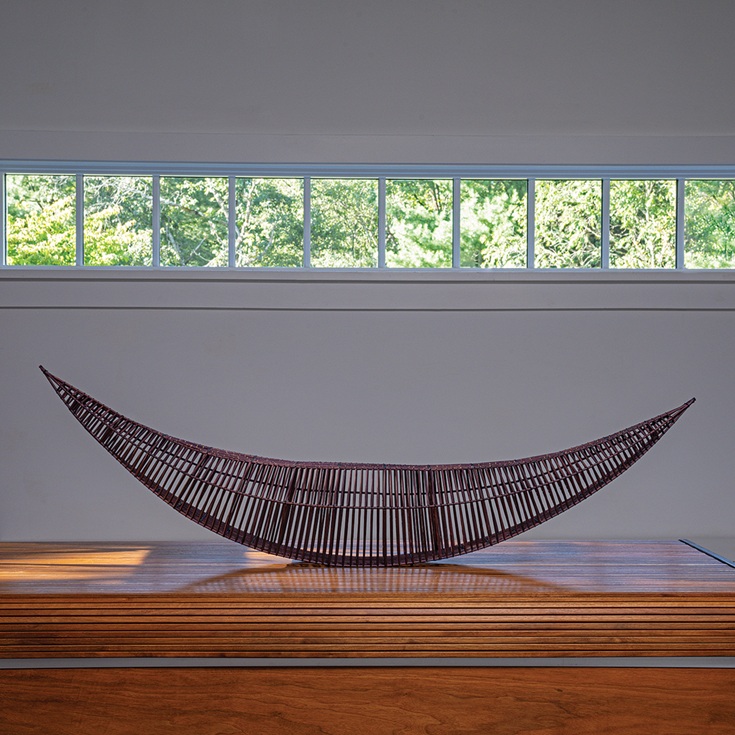
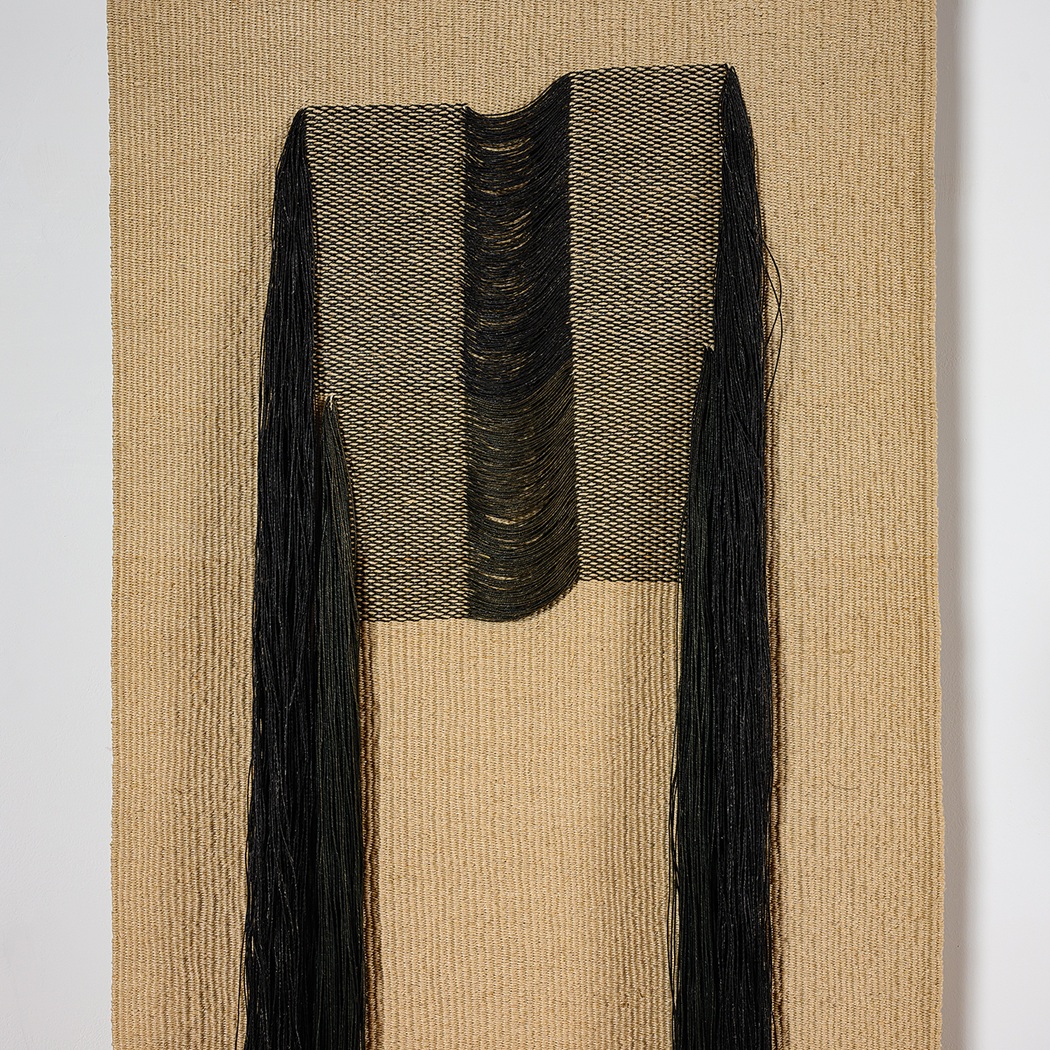
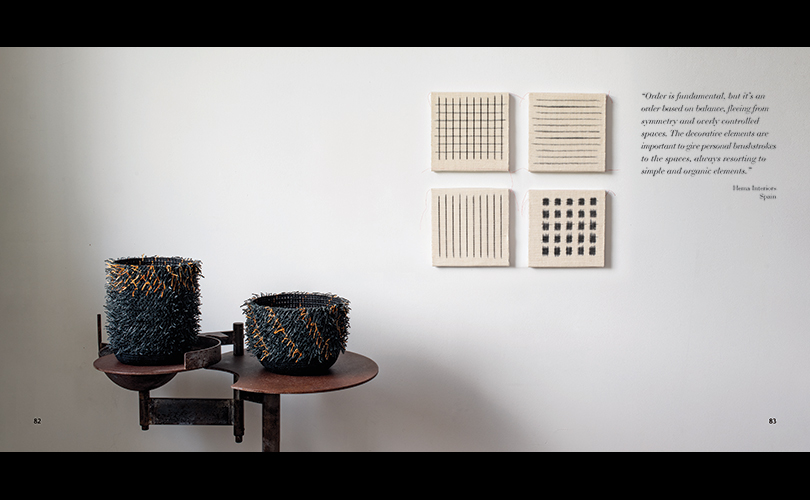
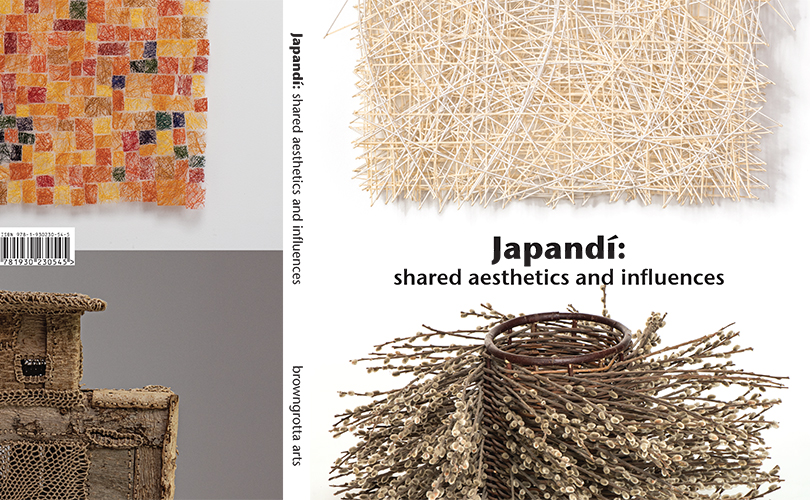
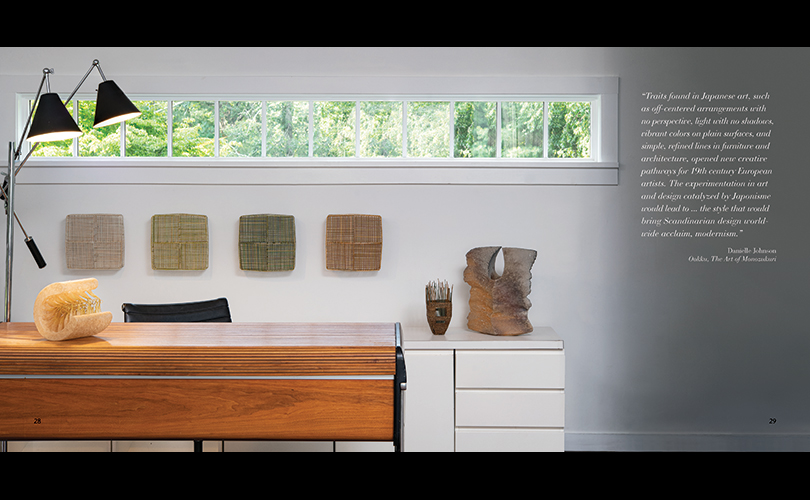
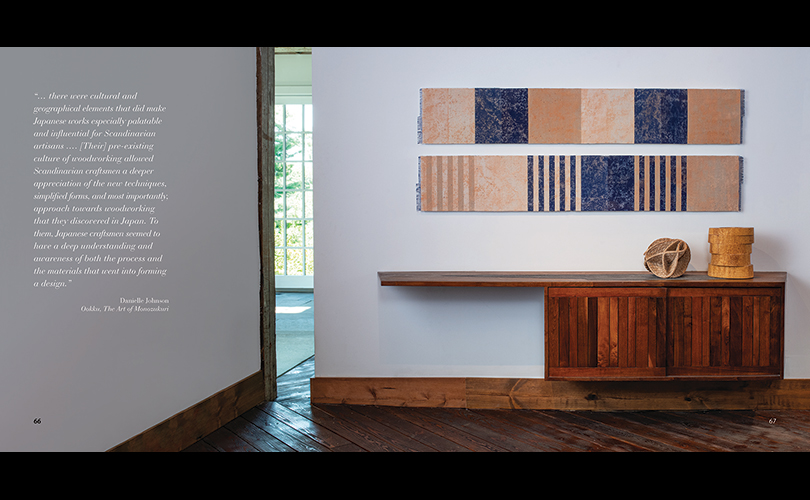
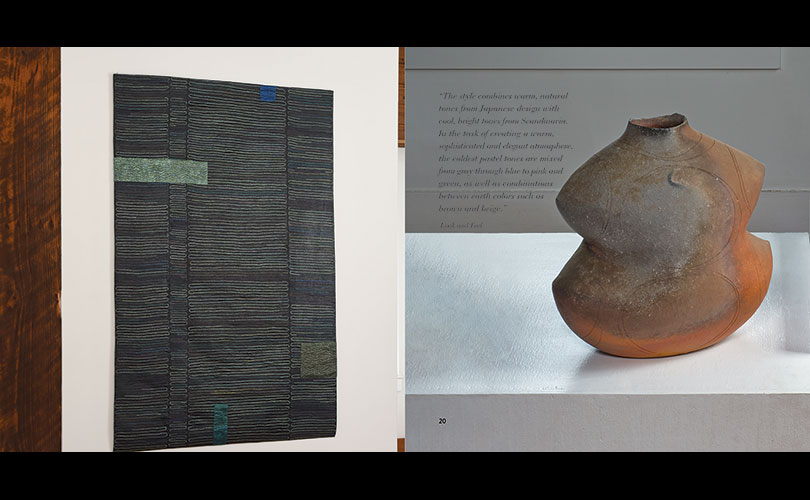
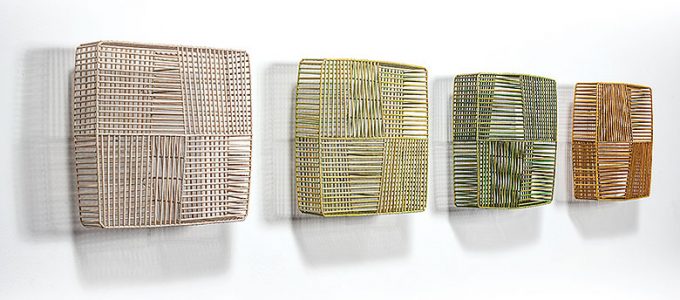
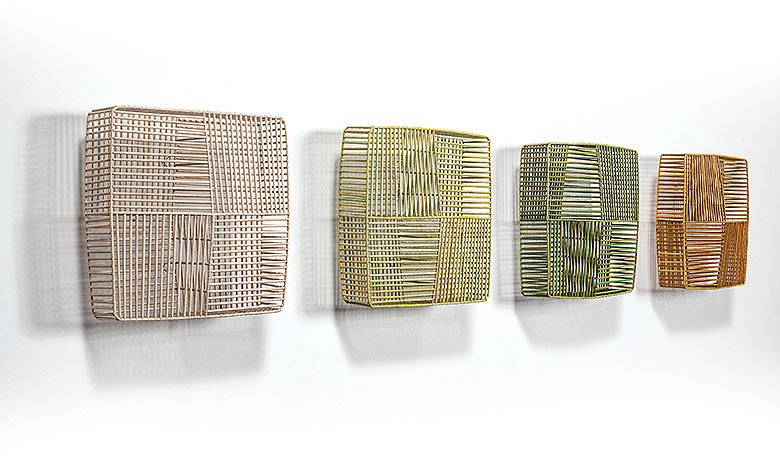
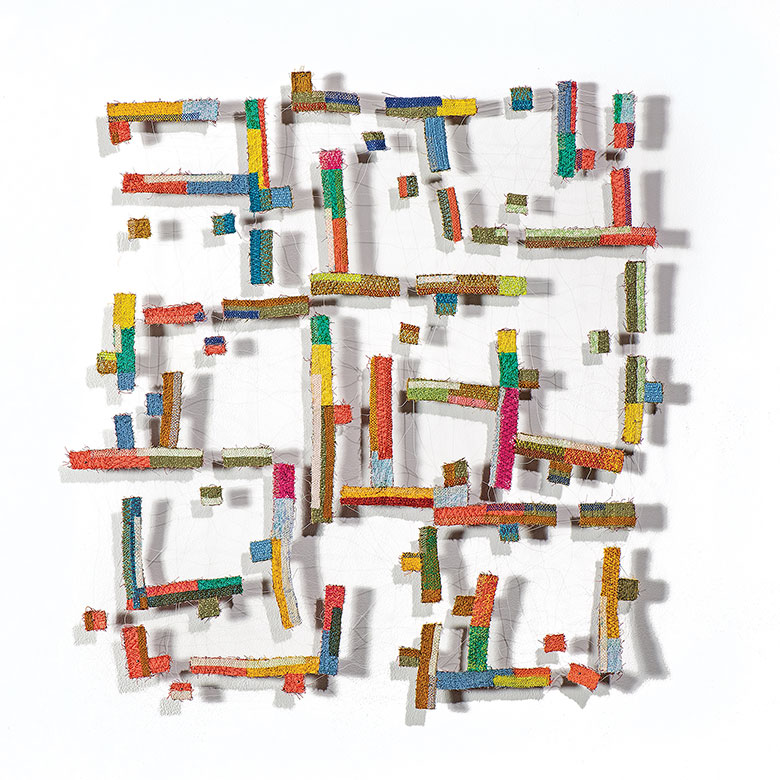
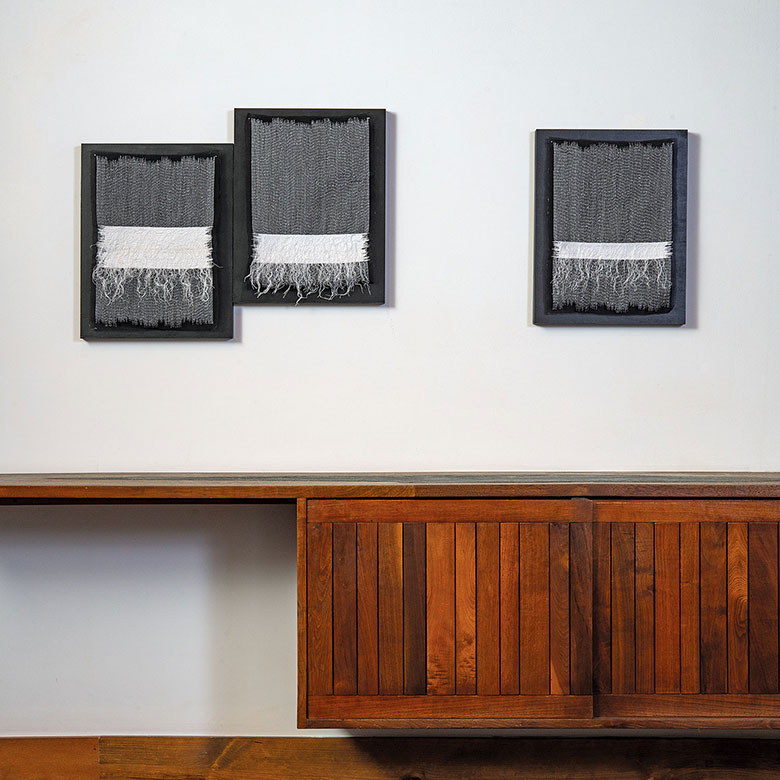
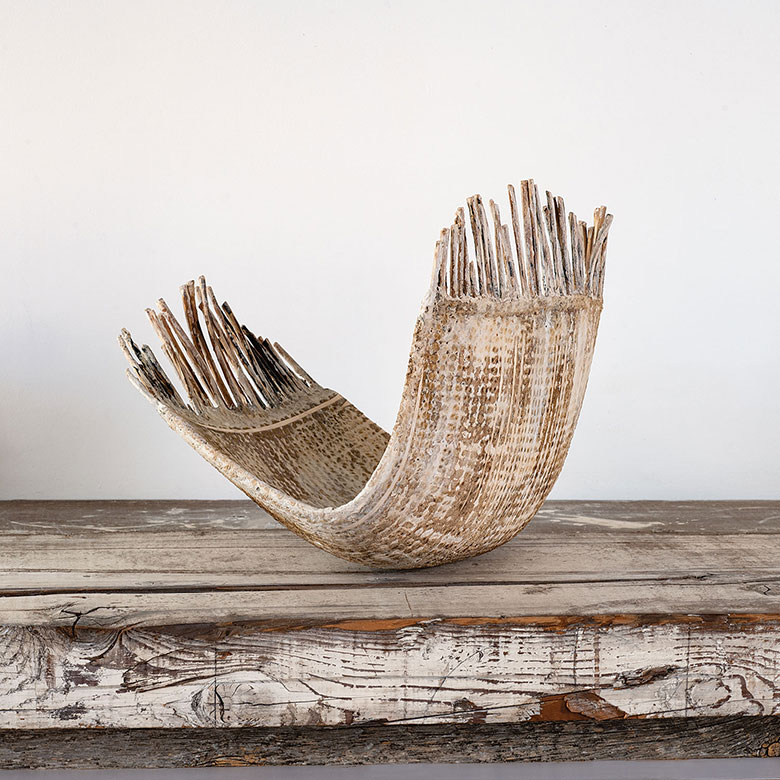
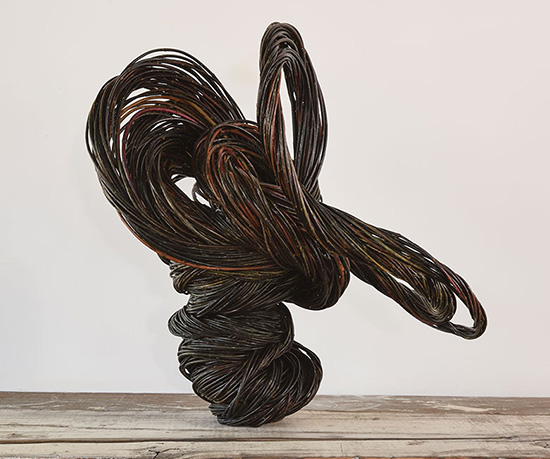
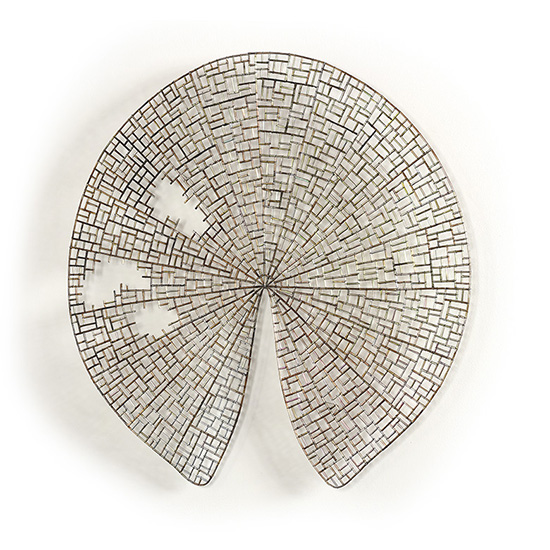
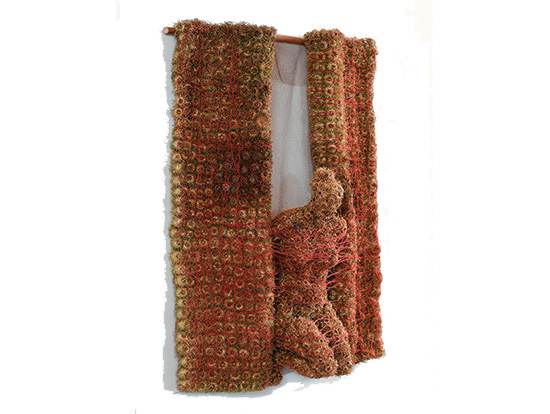
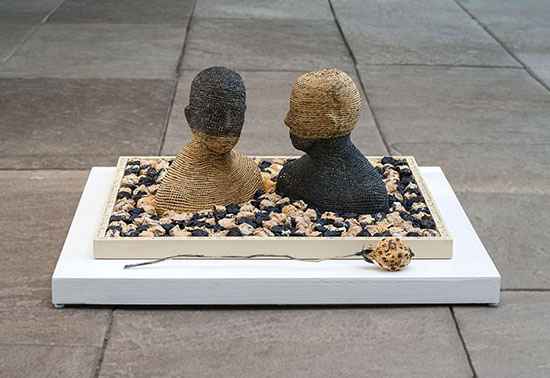
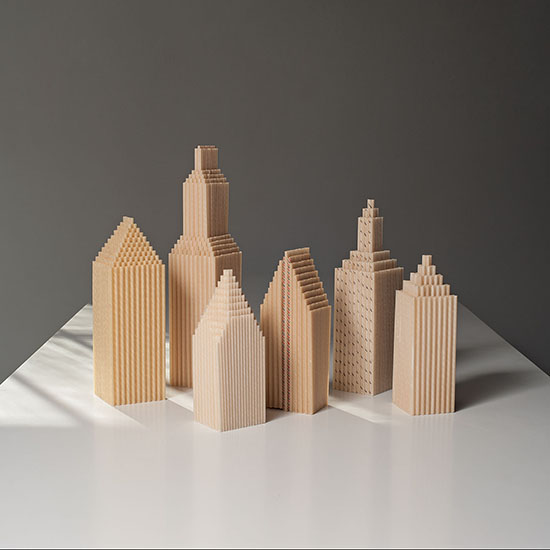
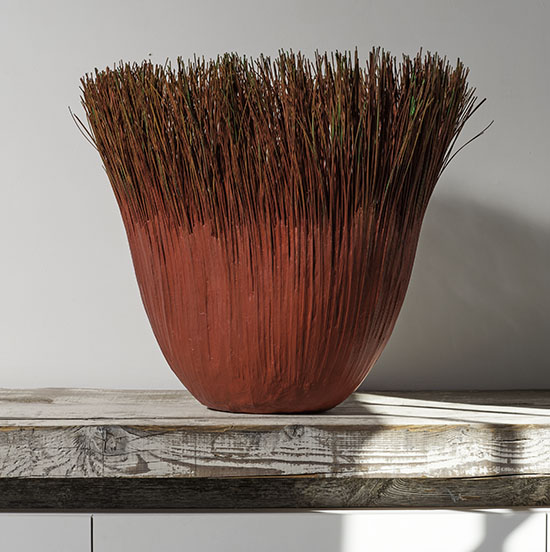
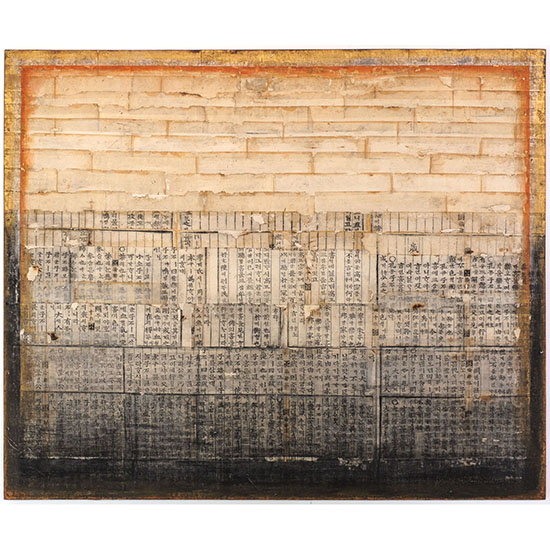
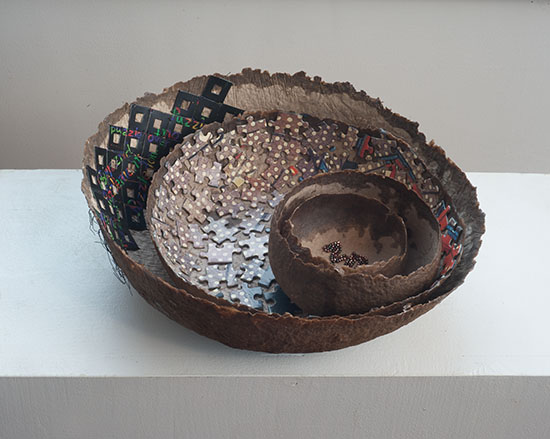
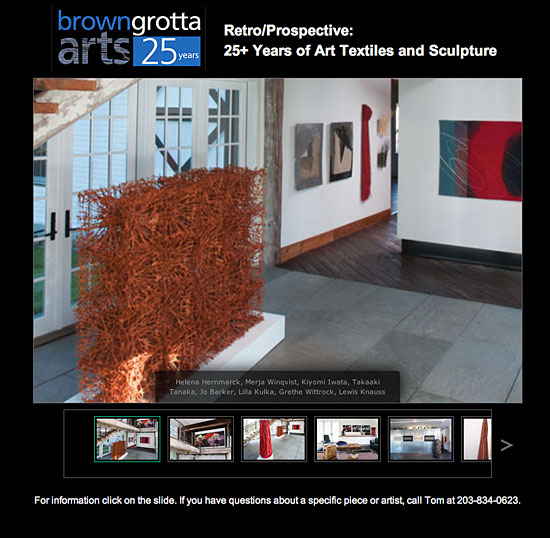
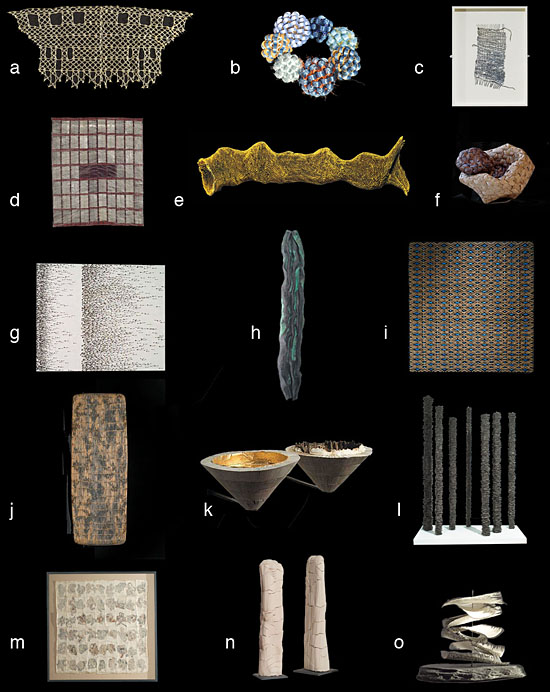
News Flash: Artists Get Good Press
Lawrence LaBianca in the Aspen Sojourner
Then, in its Holiday issue, Aspen Sojourner printed a lengthy piece about LaBianca’s artist-in-residency at Anderson Ranch, “Ranch Hands: A day in the life of an Anderson Ranch artist-in-resident,” by Hilary Stunda http://softarchive.net/blogs/d3pz4i/aspen_sojourner_usa_holiday.882867.html.
Surface Design Winter 2012
The Winter 2012 of Surface Design,devoted four pages to Kyomi Iwata’s new work in kibisio, a by-product of silk spinning production in Japan, previously considered a waste material http://www.surfacedesign.org/publications/sda-journal. The same issue reviewed New York Fiber in the 21st Century at Lehman College Gallery and featured Tom’s photo of Norma Minkowitz’s King of the Hill and referenced Nancy Koenigsberg’s Light and Tempest, as “challeng[ing] the idea of flatness vs. sculptural, a middle ground that fiber works can uniquely occupy.”
Dail Behennah Grid Dish, 40:40 Forty Objects for Forty Years
The UK’s Craft Council included Dail Behennah’s Grid Dish as one of its 40:40/Forty Objects for Forty Years. You can see all 40 objects at: http://onviewonline.craftscouncil.org.uk/4040/.
Korean Foundation Newsletter 12 2011
The December 2011 issue of the Korea Foundation Newsletter featured a profile of Jin-Sook So in conjunction with coverage of the exhibition of Swedish craft art that she curated in Seoul late last year http://newsletter.kf.or.kr/news/news_201112/eng/sub_02.html. In the piece, “Encounter of Swedish Crafts and Korean Sensibilities; Textile Artist Jin-Sook So’s Views of Contemporary” So explains how Sweden and Korea influence her work. “I’ve lived in Sweden for 30 years and have traveled all over the world to create works and hold exhibitions, but my roots remain in Korea. Although I didn’t intend it to be, Korea and Korean sentiments have served as the spirit and inspiration that have motivated me. As time went by, it became even more evident, and I believe they will remain the roots of my work in the future.”
New York Spaces October 2011
So’s work of steel mesh, Untitled, was also included in the “Art Now” column of New York Spaces last October.
Textile Forum December 2011
Photos of work by three artists represented by browngrotta arts were featured in the December 2011 issue if the ETN textileforum. These included shots of Merja Winquist’s, Winter Garden, her large, on-site installation at the Sofia Paper Art Fest in Bulgaria, Anda Klancic’s lighted work, Aura FM, at the 2011 Como Miniartextil exhibition in Italy and Grethe Sorenson preparing for her Traces of Light exhibition at the Round Tower in Copenhagen, Denmark through March 11, 2012.